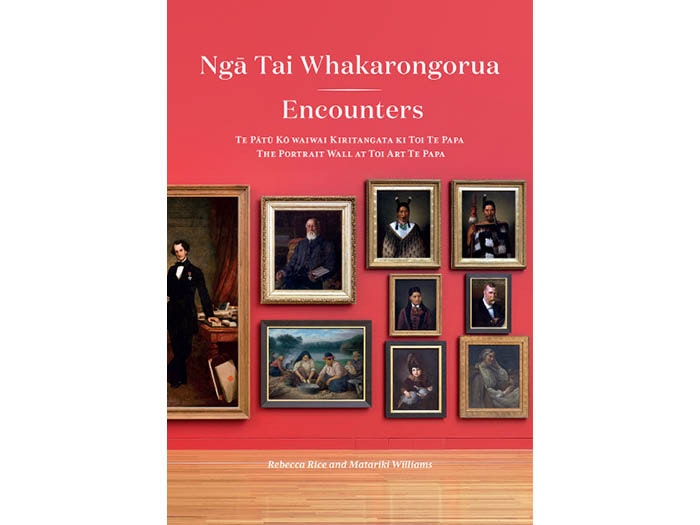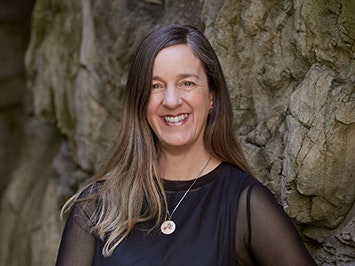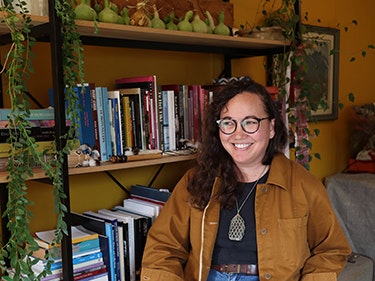
Ngā Tai Whakarongorua | Encounters
Accessible, informative guide to one of Te Papa’s most popular permanent art exhibitions
Free museum entry for New Zealanders and people living in New Zealand
Open every day 10am-6pm
(except Christmas Day)
Free museum entry for New Zealanders and people living in New Zealand
Rebecca Rice and Matariki Williams discuss Ngā Tai Whakarongorua | Encounters with Te Papa Press.
Rebecca Rice is Curator Historical New Zealand Art at Te Papa. Her current research focuses on nineteenth-century female botanical artists, the visual culture of the New Zealand Wars, and the impact of impressionism on New Zealand artists at home and abroad.
Matariki Williams (Ngāi Tūhoe, Ngāti Whakaue, Ngāti Hauiti, Taranaki), formerly Curator Mātauranga Māori at Te Papa, is Pou Hītori Māori Matua | Senior Māori Historian at Manatū Taonga, the Ministry for Culture and History. Her research interests include contemporary social history, art, and digital expressions of self and culture.
Rebecca Rice (above) and Matariki Williams (below), authors of Ngā Tai Whakarongorua | Encounters
Matariki Williams: This exhibition was one of the opening hangs for Toi Art in 2018, a major rebuild and rethink of the art gallery at Te Papa. We co-curated the exhibition, mining the collection for portraits from the nineteenth century, working on a layout with the designer, and researching and writing the stories that would be told, both on the floor, and now in this publication.
Though the exhibition was co-curated, we did write labels separately – I focused on the tīpuna Māori and taonga Māori, and Rebecca on the other historical portraits. It was crucial for us, as an inter-disciplinary institution, to consider what portraiture could mean from a Māori perspective and how taonga can stand-in for people and tīpuna.
Rebecca Rice: What I’ve found fascinating is that even though the ‘salon hang’ (displaying works from floor to ceiling) as well as the rich red colour of the wall are both very traditional, audiences have responded really strongly to both, seeing them as a fresh approach to exhibition design.
MW: Portraiture is an accessible and compelling form and I think that humans can’t help but be compelled by something that reflects themselves. Aside from that, there is a really stunning variety of taonga on display, some of which are well-known and really beloved, like the Goldie and Lindauer paintings of tīpuna. The interpretive devices, the digital labels, have such a depth of kōrero involved in them that can keep people intrigued for hours and they are a testament to our digital team who are not only technical wizards in terms of user experience, but are also able to identify exciting stories.
RR: We made a long-list of works of historical portraits in the collection and then gradually finessed our selection. Some aspects of this were very hands on – working with images of the portraits printed to scale and arranging them on a long table to see what worked, and what looked balanced in terms of a general layout. We also considered which portraits we really wanted to get onto the floor. For example, William Beetham’s portrait of Featherston and the Māori rangatira, Te Puni and Wi Tako, pretty quickly became an obvious centerpiece, and hadn’t been shown in the art galleries for many years. I also enjoyed that we weren’t just limiting ourselves to showing either Māori or Pākehā portraits, but were able to bring all works together on the wall, and think about the relationships between people, artists, and audiences across time and space.
MW: That the histories depicted on the wall continue to impact our society, in the same way that uri may continue to feel a strong connection to their tīpuna who are represented on the wall. Further interpretation is important and the language we use when talking about history is deliberate, it can be uncomfortable but difficult histories necessitate that discomfort.
RR: That people will enjoy returning to the pictures, and reading the stories we have told. There are so many rich connections to our complex colonial past and its legacy hinted at here, so if, as Matariki suggests, people reading the book were also inspired to think more about the historical issues we can only briefly touch on here, that would be amazing.
MW: This is a standard approach that Te Papa takes to interpretation and is one way that we can fulfill our obligations to Te Tiriti o Waitangi and the aspirations of iwi Māori. One reason for parallel approaches is that there is no need to contextualise te reo Māori and tikanga Māori in te reo texts therefore leaving more space to provide more kōrero. Another reason for the parallel text could be that the message for te reo readers is different, an example being the title of the room itself, which is not a direct translation but rather allows an opportunity for a Māori insight into the histories in the gallery. Rather than translating the word ‘encounters’, which has specific connotations linked to James Cook and his arrival in Aotearoa, the approach was taken instead to acknowledge the multiplicity of kōrero and histories in the wall and the only constant that a tide (ngā tide) has, which is movement. Me mihi ka tika ki tōku hoa, te kaituhi reo Māori, Ranea Aperahama, nāna i hanga tēnei ingoa.
MW: Visibility is a powerful tool; we need it for our audiences to be able to view these taonga, which are often in collection storerooms. Te Papa is just one site of research and knowledge — there is research taking place throughout Aotearoa, and making our collections visible to these researchers is really important. This work can be both passive (digitising our collections) and proactive (sharing kōrero online in various fora like arts websites). An article published on The Spinoff Ātea featuring some of the portraits of unknown women in the gallery led to an iwi making contact with Te Papa and us entering into an ongoing dialogue with them about the potential identification of a tīpuna.
RR: Oh, that would definitely have to be Petrus Van der Velden’s portrait of Dr Hassell and his remarkable moustache! When we had this painting in the conservation lab, we found that one side of the painting had been cut, and nailed rather crudely to the front edge of the wooden stretcher (rather than wrapping around). So then we found ourselves wondering what the details in the bottom right corner of the painting were. Further research revealed that the painting had originally been a double portrait of Dr Hassel and his first wife, but it seems his second wife (who gifted the portrait to the gallery) literally had her predecessor cut out of the picture! This is a great story that is also told in the Te Papa Press book The Back of the Painting.
RR: I think that what these portraits remind us of is our entangled pasts – the complicated, and, as Matariki has written, often painful histories of Aotearoa New Zealand. So when we encounter the peoples and the stories on this wall in this moment we do want people to see themselves in the wall – that was one reason for including the mirrors. Because if you see yourself alongside these historical figures, then you start to think about who they were, the lives they led, and the relationships they held, the choices they made. The past is always relevant in the present, the legacies of the past continue to impact on society, so perhaps by better understanding historical encounters we can think productively about encounters in the present and the future, and what we want our legacy to be.
RR: Well, I’ve suggested it would be quite something to hear Poetua give Cook an earful. We know that his command was failing when he landed on Rai’a’tea, but his treatment of Poetua and her brother was quite shocking and I am sure she would have something powerful to say.
I’d also like to hear those women whose identities we don’t know tell us who they are and where they have been. Perhaps they would tell us what their experience of being painted by Lindauer, or Steele, or Dittmer, was like. I’d also love to hear D K Richmond speak, and tell us her feelings about being a female artist in Wellington in the early 20th century.
MW: Any time that we get to share the kōrero surrounding the taonga on the wall is a privilege. One of the greatest instances was working with the deaf community to create videos in NZSL about some of the taonga on the wall. When talking with Theresa, who was the onscreen person, about the taonga Te Umukohukohu, a pūtātara, it became apparent that there was a disconnect between the English translation of a pūtātara and the actual function of a pūtātara. Pūtātara are translated as trumpets, which are signed in a way that does not convey how a pūtātara is played. This meant that Theresa then consulted with the Māori sign language community about a sign for the word and then created a sign for it. I’d never had an insight like that before, and it does blow my mind that it took an exhibition like this to provide that, but that’s the magic of Te Papa.
RR: What the portrait wall has always highlighted for me is that in New Zealand there is barely two degrees of separation. On most occasions we’ve spoken a new relationship has come to light. Most recently it was a woman who, at the end of our talk, said she was a descendant of Isaac Featherston!

Accessible, informative guide to one of Te Papa’s most popular permanent art exhibitions

